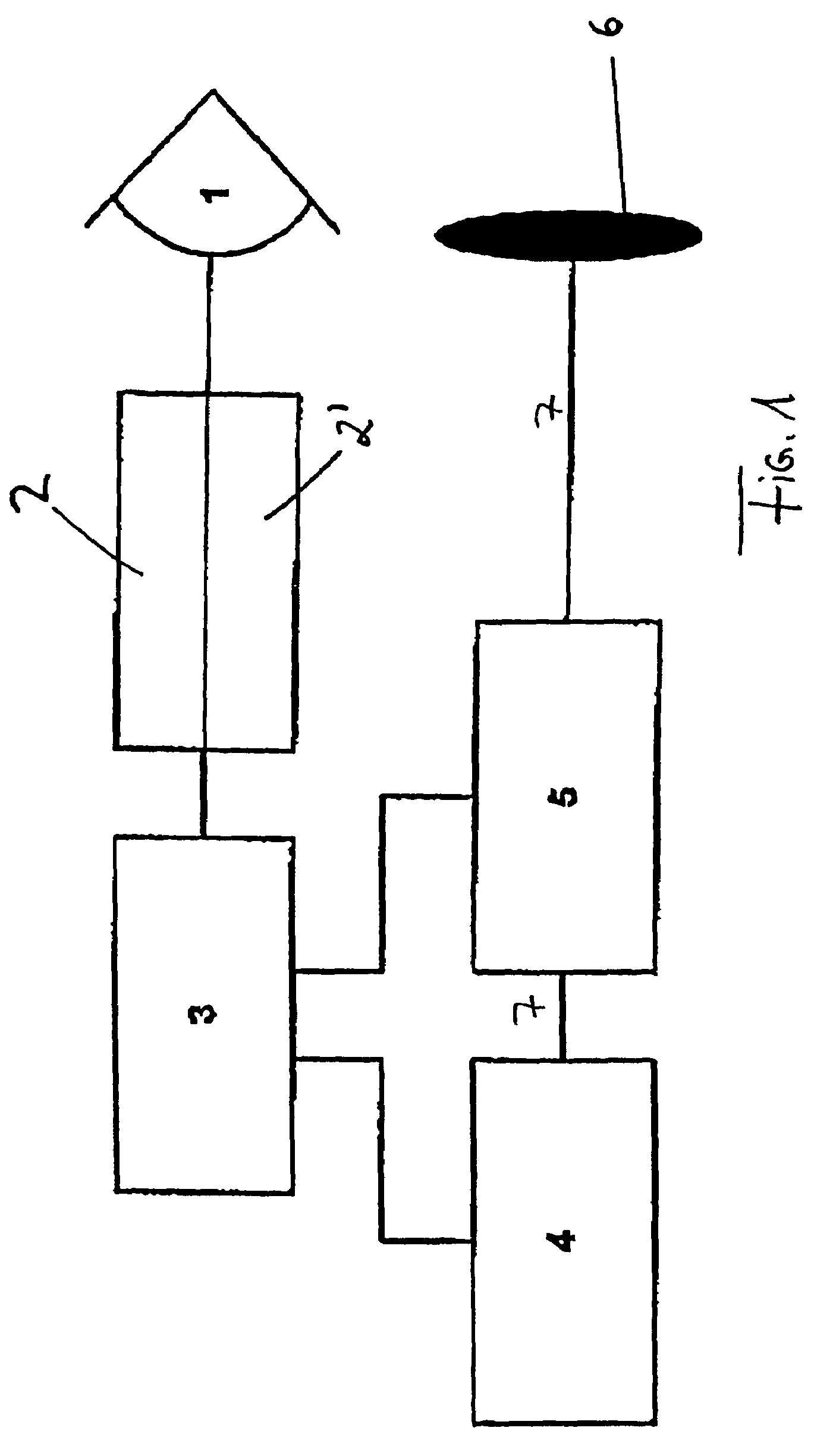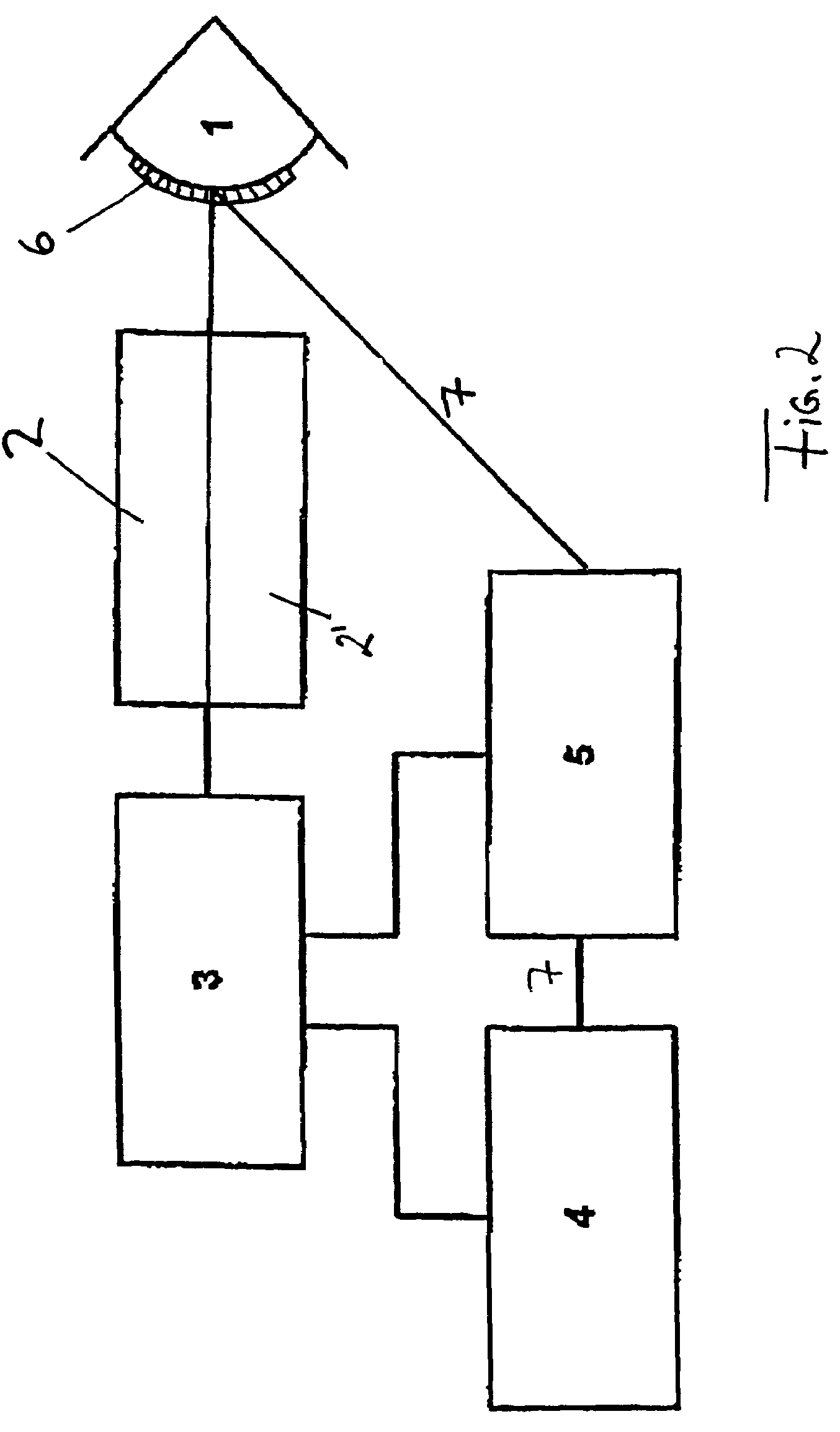Method and device for performing online aberrometry in refractive eye correction
a technology of aberrometry and refractive eye, applied in the field of methods and devices for correcting visual defects of the human eye, can solve problems such as lens correction
- Summary
- Abstract
- Description
- Claims
- Application Information
AI Technical Summary
Benefits of technology
Problems solved by technology
Method used
Image
Examples
Embodiment Construction
[0039]FIG. 1 depicts a block diagram for an exemplary embodiment of a device according to the present invention for correcting visual defects of an eye on a lens. A wavefront analyzer unit 2 and a topography analyzer unit 2′ are connected to a control unit 3. Control unit 3 is connected to a laser 4 and to a beam modification device 5 via A bus. A lens 6 is depicted downstream of beam modification device 5. An eye 1 is shown upstream of wavefront analyzer unit 2 and topography analyzer unit 2′.
[0040]In the operating state, the beams of wavefront analyzer unit 2 and topography analyzer unit 2′ scan eye 1 and transmit the obtained signals to control unit 3. The beams which are used here are preferably beams of a coherent light source, especially preferably beams of an IR diode or of a green laser. In control unit 3, the signals are processed and the ideal optical system for this eye 1 is calculated. In the depicted case, an ideal lens 6 is calculated here as element of the optical sys...
PUM
| Property | Measurement | Unit |
|---|---|---|
| visual defects | aaaaa | aaaaa |
| optical path | aaaaa | aaaaa |
| refractive visual defects | aaaaa | aaaaa |
Abstract
Description
Claims
Application Information
 Login to View More
Login to View More - R&D
- Intellectual Property
- Life Sciences
- Materials
- Tech Scout
- Unparalleled Data Quality
- Higher Quality Content
- 60% Fewer Hallucinations
Browse by: Latest US Patents, China's latest patents, Technical Efficacy Thesaurus, Application Domain, Technology Topic, Popular Technical Reports.
© 2025 PatSnap. All rights reserved.Legal|Privacy policy|Modern Slavery Act Transparency Statement|Sitemap|About US| Contact US: help@patsnap.com



